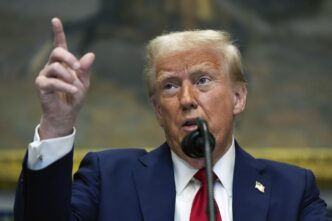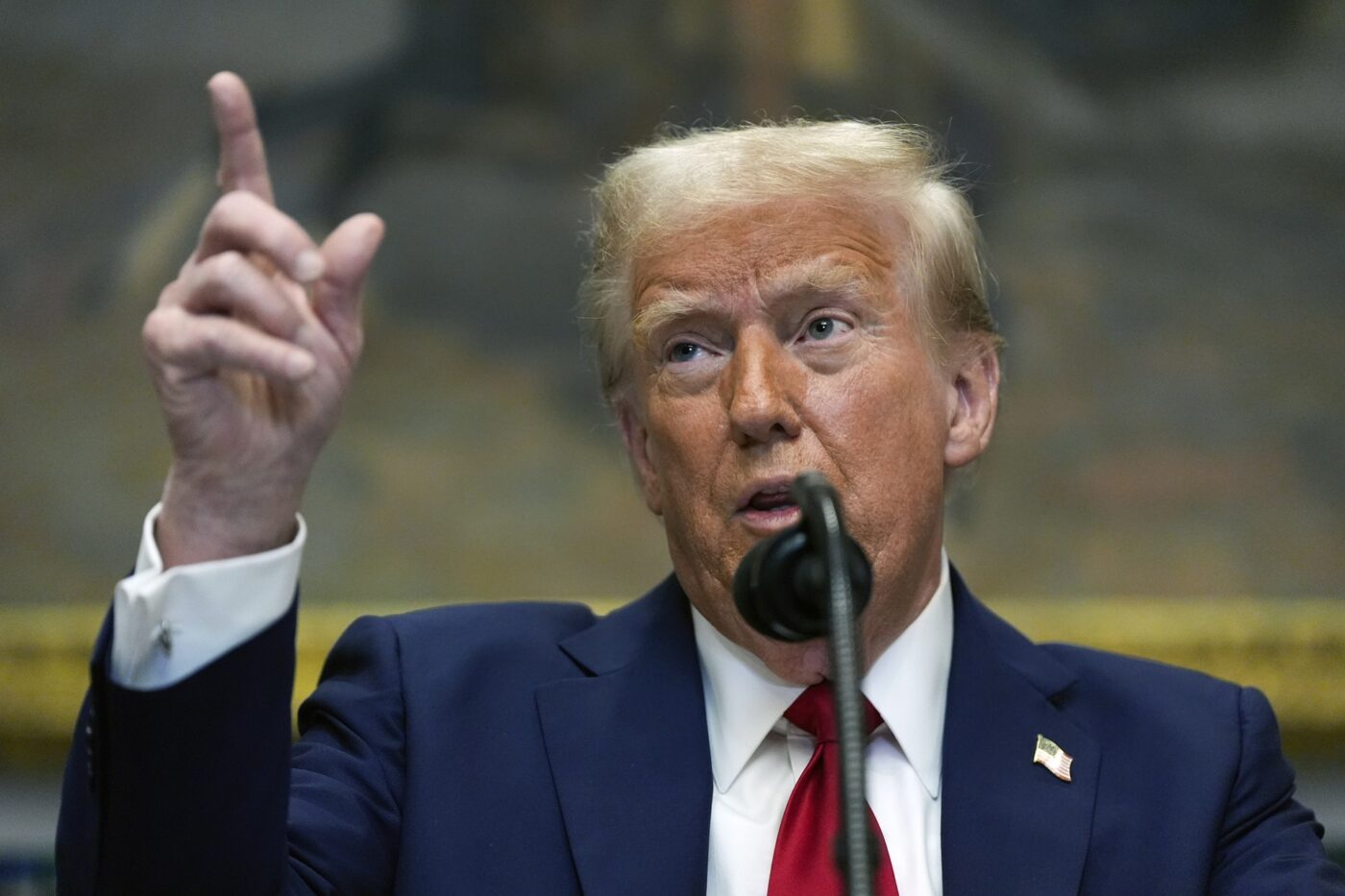Donald Trump’s barrage of executive orders and provocative tweets coupled with bold policy announcements has reshaped American politics in ways that break from tradition. Trump’s overwhelming actions move quickly and forcefully, challenging opponents to keep pace. Trump’s style does not follow the measured rhythm of typical governance; instead, he floods the public sphere with rapid, disruptive moves that leave his critics scrambling for a response and the media struggling to keep up. His approach exudes urgency and raw power, appealing to many of his supporters while unsettling those who value stable democratic practices.
When Trump takes action, he does not hesitate or proceed with caution. His overwhelming decisions are designed to shock and overwhelm the political system. His steady stream of executive orders sidesteps the lengthy legislative process and pushes past Washington’s slow-moving bureaucracy. At the same time, his public statements spark media frenzies that force his detractors into a reactive stance. This method, often described in political discourse as flooding the zone, is not about gradual policy change but about breaking down established norms and routines. Each tweet and decree is carefully calculated to muddle discussions and paralyze opposition with the sheer volume and unpredictability of his actions.
This style of leadership is not entirely new in American history. There have been moments when presidents have taken advantage of crises to push through dramatic reforms. During the Great Depression for example, President Franklin D. Roosevelt moved quickly to implement sweeping changes through the New Deal. Faced with economic collapse, Roosevelt issued numerous executive orders and passed swift legislative reforms to restore hope and rebuild the nation. While his rapid actions were meant to strengthen the federal government, Trump’s tactics seem to work in a different direction. Instead of reinforcing the state, his actions aim to disrupt the established order. His approach challenges the long-held rules that have traditionally limited presidential power, responding to what he sees as a stagnant system and reimagining the role of the presidency in a way that is both bold and unsettling.
Trump’s overwhelming, maximalist method resembles a barrage in battle. By issuing orders and making public statements without pause, he creates a sense of urgency that prevents opponents from coordinating an effective response. His strategy forces critics into a position where they must choose between engaging with every new controversy or remaining silent and risking being overlooked. It is similar to a military tactic in which overwhelming firepower leaves little time for the enemy to regroup. In the political arena, where the power of a story often rivals that of policy, this constant action disorients and weakens those who oppose him. His moves are as much psychological as they are political, sending a clear message that traditional forms of resistance may no longer work.
However, the very strength of this approach also brings significant risks. The rapid, overwhelming style that has earned Trump both praise and admiration can also expose weaknesses in the democratic system he seeks to change. While his tactics provide immediate gains—energizing his supporters and keeping his adversaries off balance—they also threaten to undermine the long-term stability of the system. The rapid pace of change creates uncertainty and makes it difficult to discern the long-term effects of each decision. As the political system struggles to adapt to this new style of leadership, the tension between the promise of decisive action and the need for lasting institutional balance becomes ever more apparent.
A key part of this unfolding story is the relationship between Trump’s overwhelming tactics and the legal institutions meant to check presidential power. Unlike in earlier eras, when judicial pushback against sweeping changes was strong and immediate, Trump has enjoyed a more favorable judicial environment. Over his time in office, he has appointed judges who share his views, making the courts more likely to support his decisions—a fact documented by multiple sources on judicial appointments. This judicial alignment is no accident; it reflects a deliberate strategy designed to protect his bold moves. Many of his executive orders include severability clauses, legal safeguards that ensure if one part of an order is struck down by the courts, the rest can still stand. This careful legal planning shows that his approach is not haphazard but built on a detailed understanding of the constitutional framework.
Public opinion, too, plays an important role in this story. Recent surveys reveal that many Americans are deeply uneasy about expanding presidential power. A large majority, including significant numbers of Republicans and Democrats, view any increase in presidential authority as risky. Among Democrats, concerns about unchecked power are almost universal, while some Republicans believe that a president free from the constraints of Congress or the courts could address national problems more effectively. For many voters, Trump’s bold actions are a double-edged sword. On one side, they promise quick and decisive solutions in a system that often seems paralyzed by red tape. On the other, they raise fears that concentrating too much power in one person could eventually weaken the system of checks and balances vital to democracy.
The media also plays a major role in this dynamic. In today’s fast-paced, digitally connected world, the way news is shared and consumed has changed dramatically, as seen in the evolution of digital journalism. Trump’s unfiltered communication style, especially on platforms like Twitter, disrupts traditional news channels. His constant stream of messages is designed to capture public attention and shape the narrative on his own terms. Each tweet and announcement is part of a deliberate strategy to control the news cycle. The media, forced into a reactive mode, often ends up highlighting the spectacle rather than the substance of his policies. In this environment, complex issues are reduced to short, catchy soundbites that often miss the deeper implications of his actions. This trend toward sensationalism has a profound impact on public discourse and the quality of political debate.
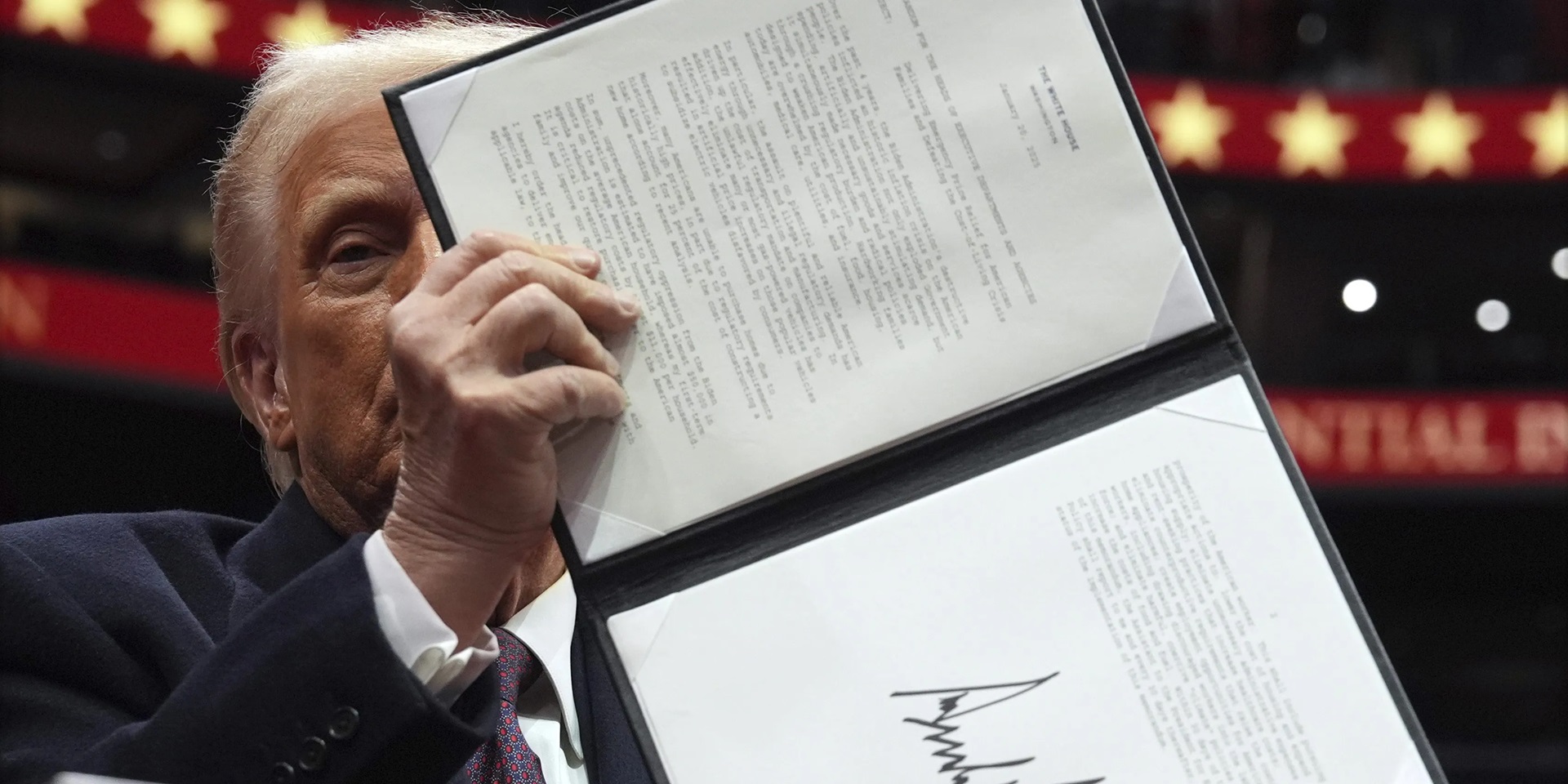
The interaction between media dynamics and public sentiment creates a feedback loop that reinforces Trump’s overwhelming approach. His supporters see his rapid-fire actions as proof of a leader unafraid to challenge a system they view as broken and inefficient. To them, his willingness to act quickly is a welcome change from a political establishment that seems to move too slowly to address urgent problems—a sentiment echoed in analyses by political commentators. They believe that bold, decisive action is necessary in a time when conventional politics appears out of touch with the needs of the people. Yet for many others, this same dynamism raises serious questions about the dangers of concentrated power. The constant flood of statements and policies can obscure critical debates and reduce nuanced discussions to simple slogans, as often highlighted in academic studies. In this way, the democratic process risks being overwhelmed by the spectacle of personality-driven politics.
The broader implications of Trump’s maximalist strategy extend beyond individual policies or controversies. At its core, his approach reflects a shift in the way political power is exercised and perceived in America. It signals a move toward a style of leadership that prizes immediate, unilateral action over the slower, more deliberate processes that have traditionally defined American democracy. This shift is part of a larger populist trend that resonates with many voters who feel let down by a system that seems unresponsive to their concerns. For these individuals, Trump’s tactics represent a break from the past—a promise of rapid change and a new way of doing politics. But this promise comes with a heavy price. The concentration of power in the executive branch if left unchecked can erode the balance that has long been the foundation of American governance.
History offers a clear reminder of the risks involved when a leader accumulates too much power. Past episodes of rapid executive action, even when driven by noble intentions, have sometimes led to an imbalance that later required a strong corrective response, as discussed in historical analyses on presidential overreach. The danger is that the short-term gains achieved by bypassing established procedures might eventually give way to long-term problems. The story of unchecked power is a cautionary tale that warns of the potential for erosion in the institutions meant to protect democracy. As Trump continues to push his agenda, the challenge for America will be to harness the energy of his decisive leadership without allowing it to destabilize the system of checks and balances essential for a healthy democracy.
At the heart of Trump’s overwhelming strategy is an ongoing struggle between the need for quick, impactful action and the importance of long-term institutional stability. His approach is both a symptom and a cause of the deep divisions in modern American politics. On one side, there is growing impatience with the slow pace of traditional governance and a desire for rapid change. On the other, there is a clear and pressing need to maintain the structures that ensure accountability and fairness—a topic frequently discussed in works on political science. The tension between these two impulses is a defining feature of today’s political landscape. Trump’s maximalist tactics capture this tension perfectly. They are designed to energize a segment of the electorate that feels marginalized by a sluggish political system while simultaneously provoking serious concerns about the future of democratic governance.
The story of Trump’s overwhelming approach unfolds in real time, with each new day bringing fresh examples of his relentless drive to reshape American politics. Every executive order, every tweet, and every public statement is a piece of a larger puzzle—a puzzle that, when viewed as a whole, tells the story of a leader determined to upend the traditional rules of politics. His method of overwhelming the system is not merely about making headlines or stirring up controversy; it is a calculated effort to redefine the nature of political power itself. By continuously flooding the political arena with his actions, Trump forces everyone—from lawmakers and judges to journalists and ordinary citizens—to confront a new reality. In this reality, the pace of change is dizzying, and the traditional slow, deliberate methods of governance seem out of place.
This approach has both immediate and long-term consequences. In the short term, it can lead to rapid shifts in policy and a sense of excitement among supporters, a phenomenon often highlighted in studies of political momentum. The very spectacle of rapid action can galvanize a base that is eager for change and frustrated by perceived inaction from established leaders. At the same time, however, the rapid pace can create an environment of confusion and uncertainty. The constant flurry of activity makes it difficult for anyone—whether political opponents, analysts, or the public—to fully grasp the implications of each move. Important debates and discussions can be sidelined in favor of reacting to the latest controversy. Over time, this can result in a political landscape where real policy analysis is replaced by a continuous cycle of reactive responses, reducing the space for thoughtful, long-term planning.
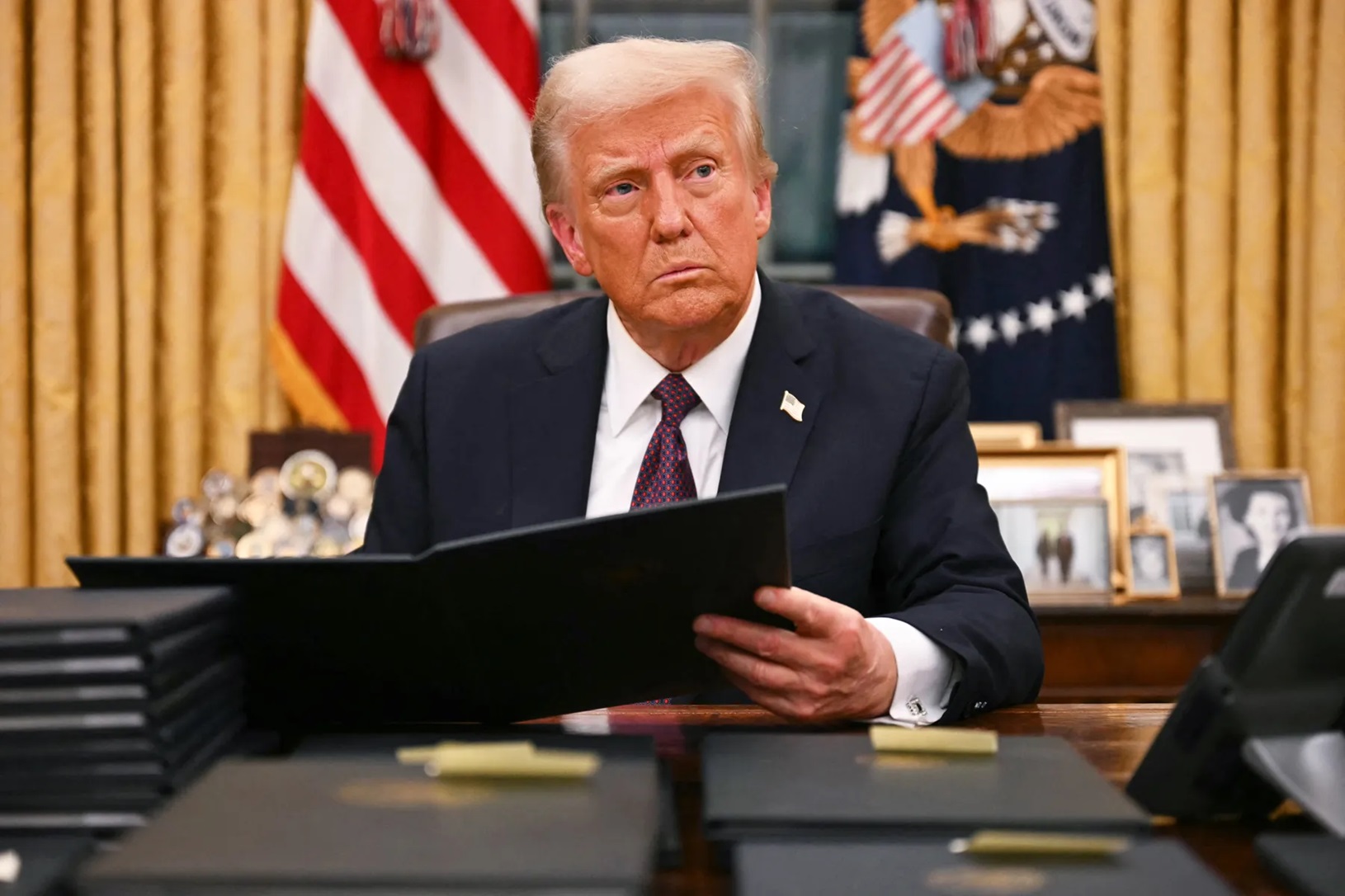
Yet it is precisely this relentless pace that has defined Trump’s second-term presidency. His willingness to act decisively—and often impulsively—has become his signature trait. In a time when many voters are frustrated by what they see as endless bureaucratic delays, his approach appears to offer a welcome alternative. Supporters appreciate his unyielding style, viewing it as evidence that he is willing to break free of the constraints that have long bogged down American politics. They see in his actions a boldness and determination that, in their view, is sorely needed in a system marked by gridlock and indecision. For these voters, the constant barrage of moves is not a sign of chaos but of genuine leadership—a leadership that promises to cut through red tape and deliver immediate results.
However, for those who value careful deliberation and institutional stability, the same overwhelming tactics by Trump can be deeply troubling. They worry that by continuously bypassing the normal checks and balances, the presidency risks becoming too powerful, setting a dangerous precedent for future leaders. There is a real fear that if one leader is allowed to act without sufficient oversight, others may follow, gradually eroding the safeguards that have long protected the democratic system. This fear is not unfounded; history has shown that the concentration of power can lead to significant imbalances, making it harder for the political system to self-correct over time.
The impact of Trump’s maximalist strategy extends beyond the halls of government. It has reshaped the way political power is discussed and understood in the public sphere. The debate is no longer simply about specific policies or legislative proposals; it has become a broader conversation about the nature of presidential authority and the role of the executive branch in a modern democracy. For many, this is a profound and unsettling change. The idea that a single leader could wield such concentrated power challenges long-held beliefs about how government should work. It forces people to reconsider the balance between decisive action and democratic accountability.
As these debates continue, it is clear that the legacy of Trump’s overwhelming approach will be felt for years to come. The challenge for the nation will be to find a way to channel the energy and decisiveness that many admire into a system that remains accountable and balanced. The task is to harness the dynamism of rapid decision-making while ensuring that the principles of checks and balances are not lost in the process. This balance is not easy to achieve. It requires constant vigilance, a willingness to engage in difficult conversations, and a commitment to preserving the core values that define democratic governance.
Every new policy announcement, every tweet, and every executive order is a reminder of the tension that underpins this era of American politics. Trump’s relentless pace forces the country to confront fundamental questions about power, accountability, and the future of governance. His style of overwhelming the system may offer short-term gains and dramatic shifts in policy, but it also poses a risk of long-term instability. As the nation continues to navigate these uncharted waters, the lessons of the past and the demands of the present must be carefully balanced.
The story of this modern political experiment is still being written. With each passing day, new moves and counter-moves add to the complex tapestry of American political life. The approach of flooding the zone with rapid, decisive actions has changed the way politics is practiced and perceived. It challenges old norms, forcing a reexamination of what it means to govern in an age of immediacy and constant change. It is a story that involves not only the strategies of a single leader but also the reactions of a divided nation—one that is caught between the desire for rapid change and the need for enduring stability.
In the end, the success or failure of this approach will depend on how well the nation can adapt to these new realities. It will be judged by whether the benefits of decisive action can be sustained without sacrificing the long-term principles that ensure accountability and balance. The future of American democracy may well hinge on finding the right mix—a leadership style that is bold yet measured, dynamic yet responsible.
Trump’s strategy of overwhelming his opponents with a relentless flood of actions is a vivid illustration of the current state of American politics. It energizes some while alarming others. It represents both the promise of rapid, transformative change and the risk of undermining the very institutions that have long safeguarded the nation’s democratic heritage. As the political landscape continues to evolve, the ongoing experiment in maximalist leadership will remain a subject of intense debate and scrutiny.
The challenge for America now is to take the lessons of this era and use them to build a more resilient and responsive political system. The energy and determination that drive rapid action must be balanced with a commitment to careful deliberation and the preservation of checks and balances. Only then can the nation harness the positive aspects of this new approach while avoiding its potential pitfalls.
In this unfolding narrative, every move, every tweet, and every legal maneuver contributes to a larger story about the future of governance. The debate over presidential power is no longer an abstract concept—it is a living, evolving issue that affects every aspect of American life. As the nation looks ahead, it must decide whether to embrace a model of leadership defined by constant motion and disruption or to return to a system where measured, thoughtful debate remains the norm.
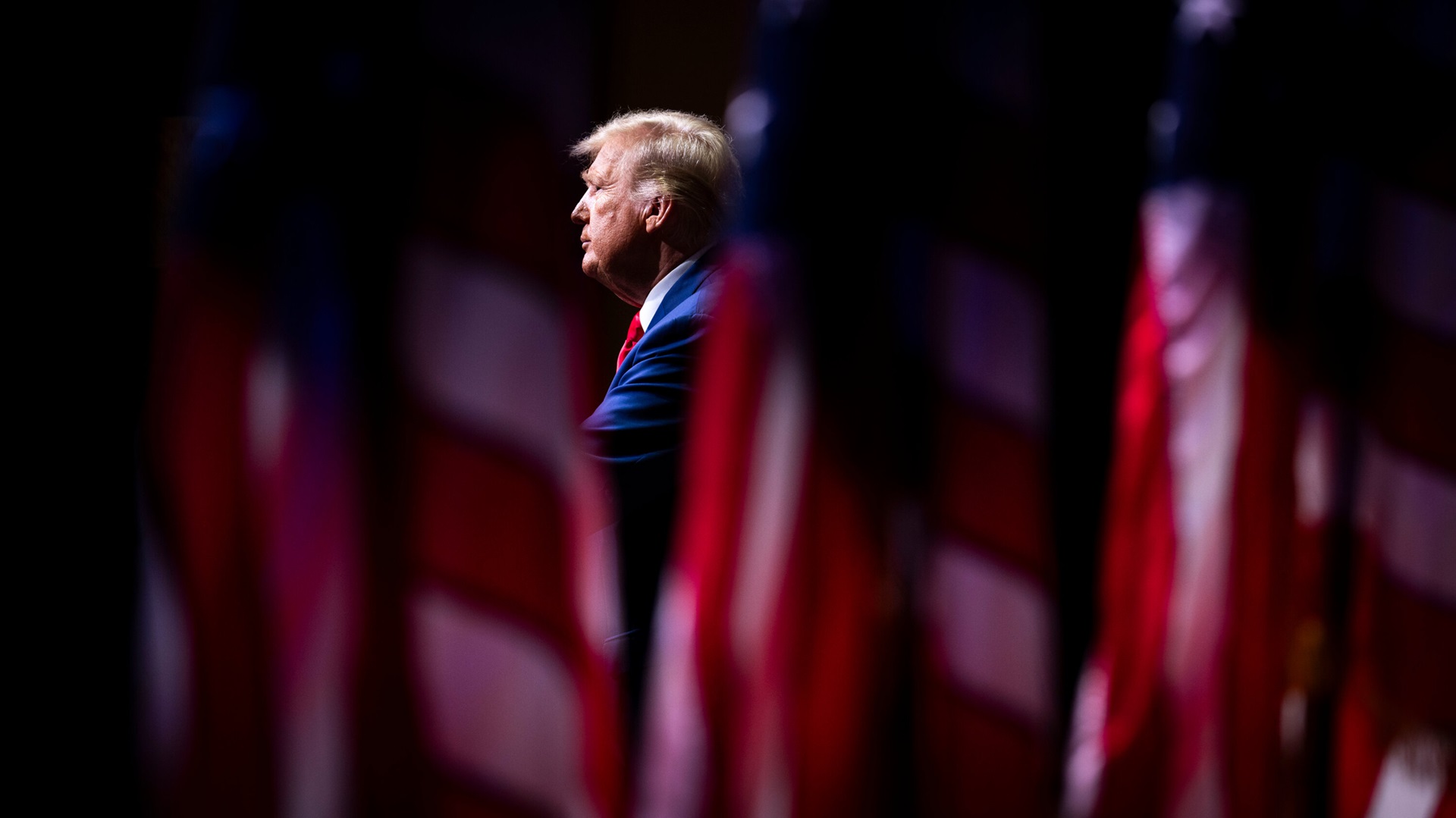
Ultimately, the story of Trump’s overwhelming, maximalist tactics is one of contrasts. It is a tale of bold leadership and stark division, of rapid change and deep-rooted tradition. It forces us to confront difficult questions about the nature of power and the future of democracy. The legacy of this approach will be shaped not only by the actions taken today but also by the responses of the institutions and people who inherit its consequences.
The coming years will reveal whether this style of leadership can be integrated into a stable, accountable system or whether it will lead to further polarization and instability. The future of American democracy depends on striking the right balance—a balance that allows for bold action when necessary but also preserves the essential safeguards that protect against the excesses of concentrated power.
For now, the story continues. With every passing day, new chapters are added to this saga of disruption and redefinition. The nation stands at a crossroads, faced with the challenge of reconciling the need for rapid change with the enduring principles of democratic governance. It is a challenge that calls for wisdom, courage, and an unwavering commitment to the ideals that have long defined American life.
In the final analysis, Trump’s method of flooding the political arena with rapid actions and bold statements is both a symptom of a troubled system and a bold attempt to reshape it. It captures the frustration of those who feel left behind by a slow-moving establishment and the fears of those who worry about the concentration of power in a single individual. As this chapter in American politics unfolds, the choices made today will determine whether the nation moves toward a future of greater responsiveness and accountability or slides further into the dangers of unchecked authority.
The debate over the proper balance of power is not merely academic. It is a question that affects every citizen, every community, and every institution that relies on the stability of democratic governance. As America grapples with these issues, the lessons of this era will serve as a guide for future generations. The energy of bold leadership must be harnessed in a way that strengthens, rather than undermines, the very foundations of the republic.
Ultimately, the true measure of Trump’s overwhelming approach will be found in its long-term impact on the nation. Will the rapid-fire tactics that have defined Trump’s time in power lead to lasting positive change, or will they leave a legacy of division and instability? Only time will tell. In the meantime, the story of overwhelming the political arena continues to captivate and challenge us all—a story that demands careful reflection, thoughtful debate, and a steadfast commitment to the principles of democratic governance.
As the nation moves forward, it must learn to balance the need for decisive action with the importance of accountability and restraint. This balance will be essential if America is to navigate the turbulent waters of modern politics and emerge stronger and more united on the other side. The future of the republic depends on it, and the choices made today will resonate for generations to come.
